Chinatown
Chinatown, is an area with one of the highest concentrations of Chinese in the Western Hemisphere, and is located in the borough of Manhattan in New York. Manhattan’s Chinatown is one of the oldest ethnic Chinese enclaves outside of Asia.
History of Chinatown
Although Chinese immigrants are said to have arrived in the area during the 1840s, the first Chinese credited as Chinatown’s first permanent immigrant was Ah Ken, a businessman who established a successful cigar store on Park Row.
He had first come to New York around 1858, where he was “probably one of the gossipy Chinese men of the sixties [1860s] who peddled awful cigars for three cents each a short distance from the fence of City Hall Park offering a paper and a small oil lamp as a lighter,” according to author Alvin Harlow of Old Days Bowery: The Chronicle of a Famous Street (1931).
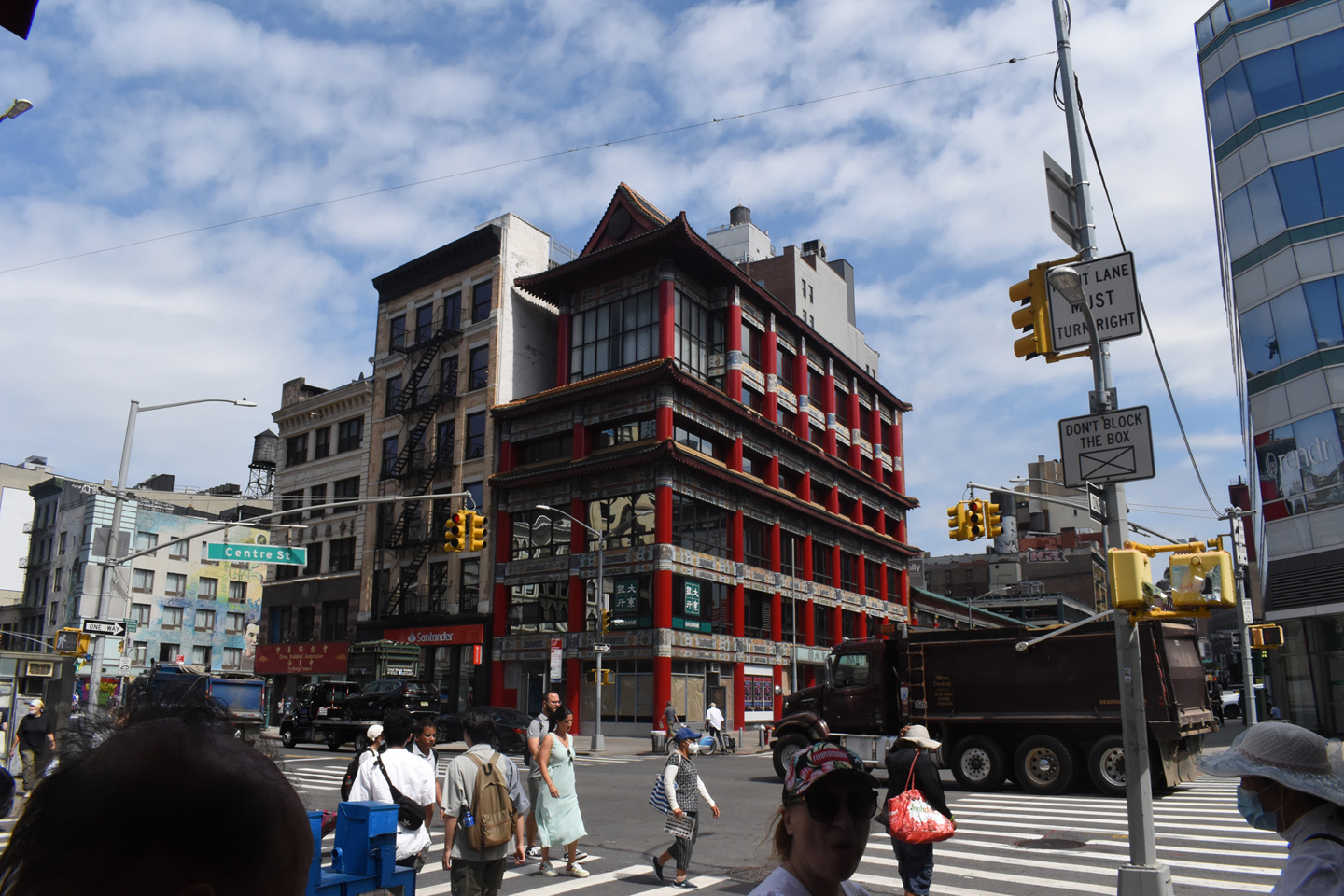
Later immigrants would similarly find work as “cigar men”, or carrying signs. Ah Ken’s particular success encouraged cigar makers William Longford, John Occoo and John Ava to ply their trade in Chinatown eventually forming a monopoly in the cigar trade.
It is thought that Ah Ken kept a small house on Lower Mott Street and rented out bunks to the first Chinese immigrants who arrived in Chinatown.
With the money he earned as a landlord – an average of $100 a month – he was able to open his own tobacco shop on Park Row around which today’s Chinatown would grow.
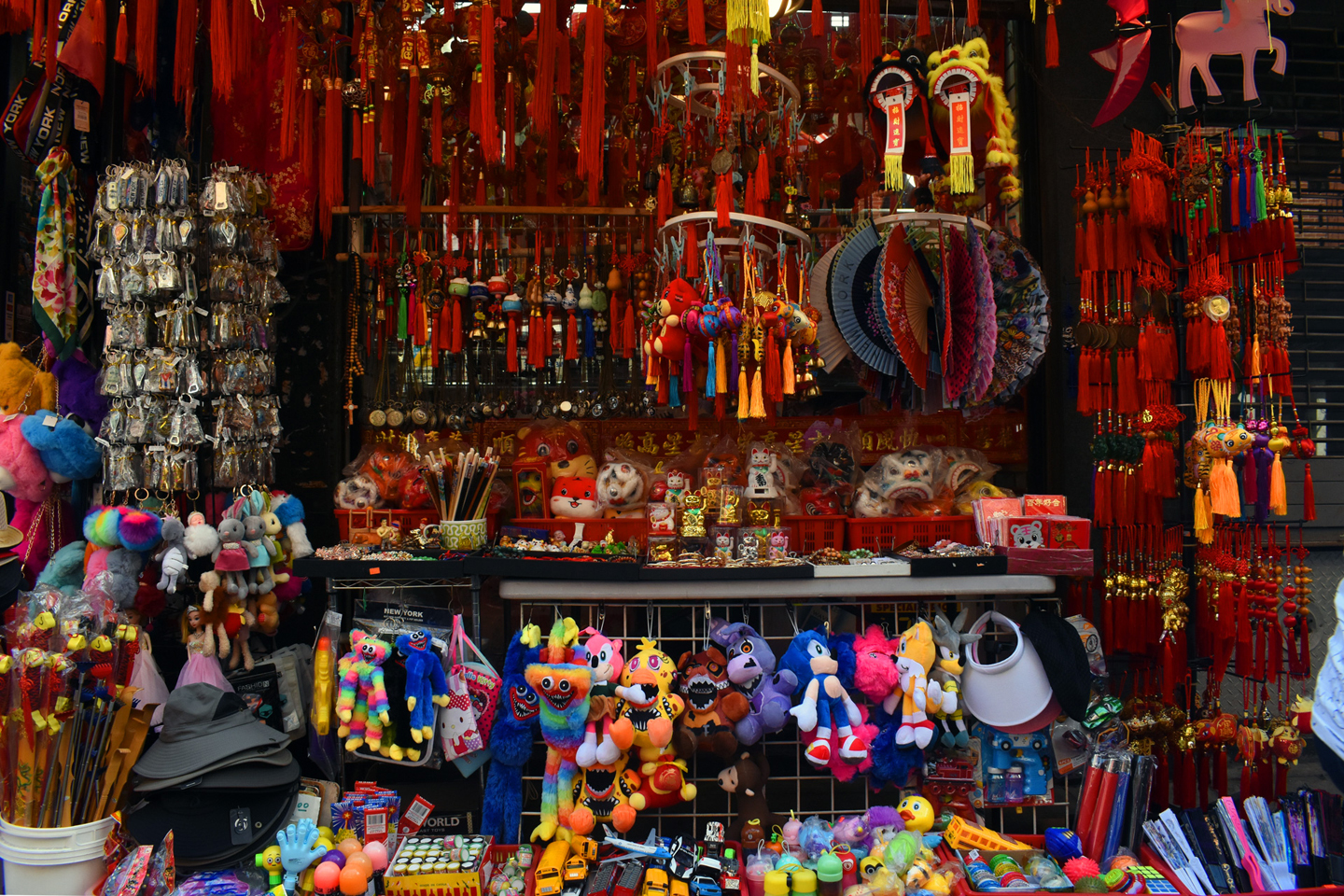
Faced with increasing discrimination and new laws that prevented participation in many professions on the West Coast, some Chinese immigrants moved to East Coast cities in search of work.
Early businesses in these towns included laundromats and restaurants. Chinatown began at Mott, Park, Pell and Doyers streets, east of the infamous Five Points area. By 1870, there was a Chinese population of 200 people.
By the time the Chinese Exclusion Act of 1882 was passed, the population had reached 2,000. By 1900, there were 7,000 Chinese residents, but fewer than 200 Chinese women.
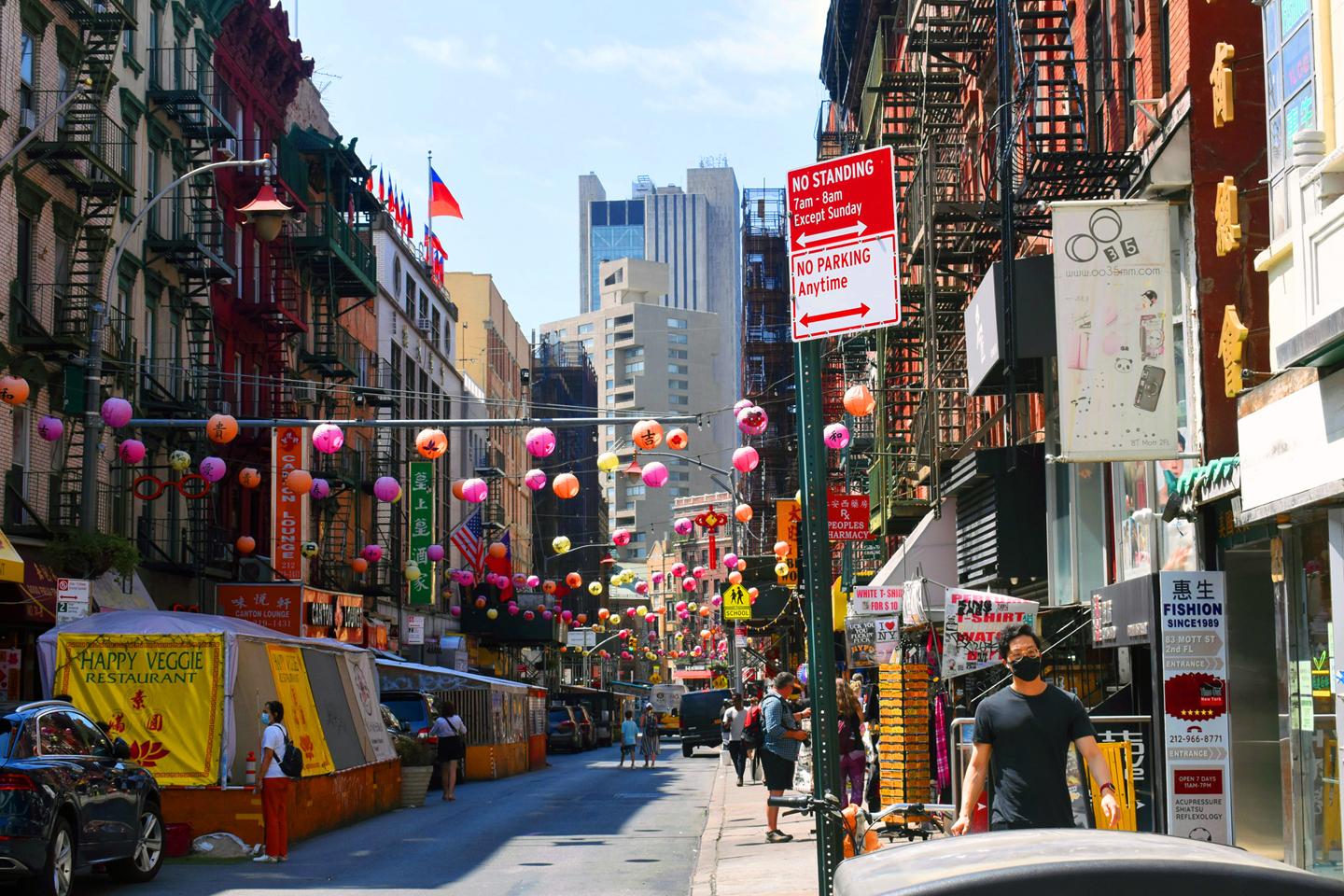
Chinatown’s early days were dominated by Chinese “tongs”, which were a mix of clan associations, settlers, political alliances and crime syndicates. Associations began to provide protection from harassment due to anti-Chinese sentiment.
Each of these associations was aligned with a street gang. Associations were a source of help to new immigrants, they gave loans to help them start businesses, and so on.
The associations formed a governing body called the Chinese Consolidated Benevolent Association. Although this body was intended to promote relations between the various associations, it opened war between the On Leong and Hip Sing associations. Much of the Chinese gang warfare took place on Doyers Street. Gangs such as the Ghost Shadows and the Flying Dragons were prevalent until the 1990s.
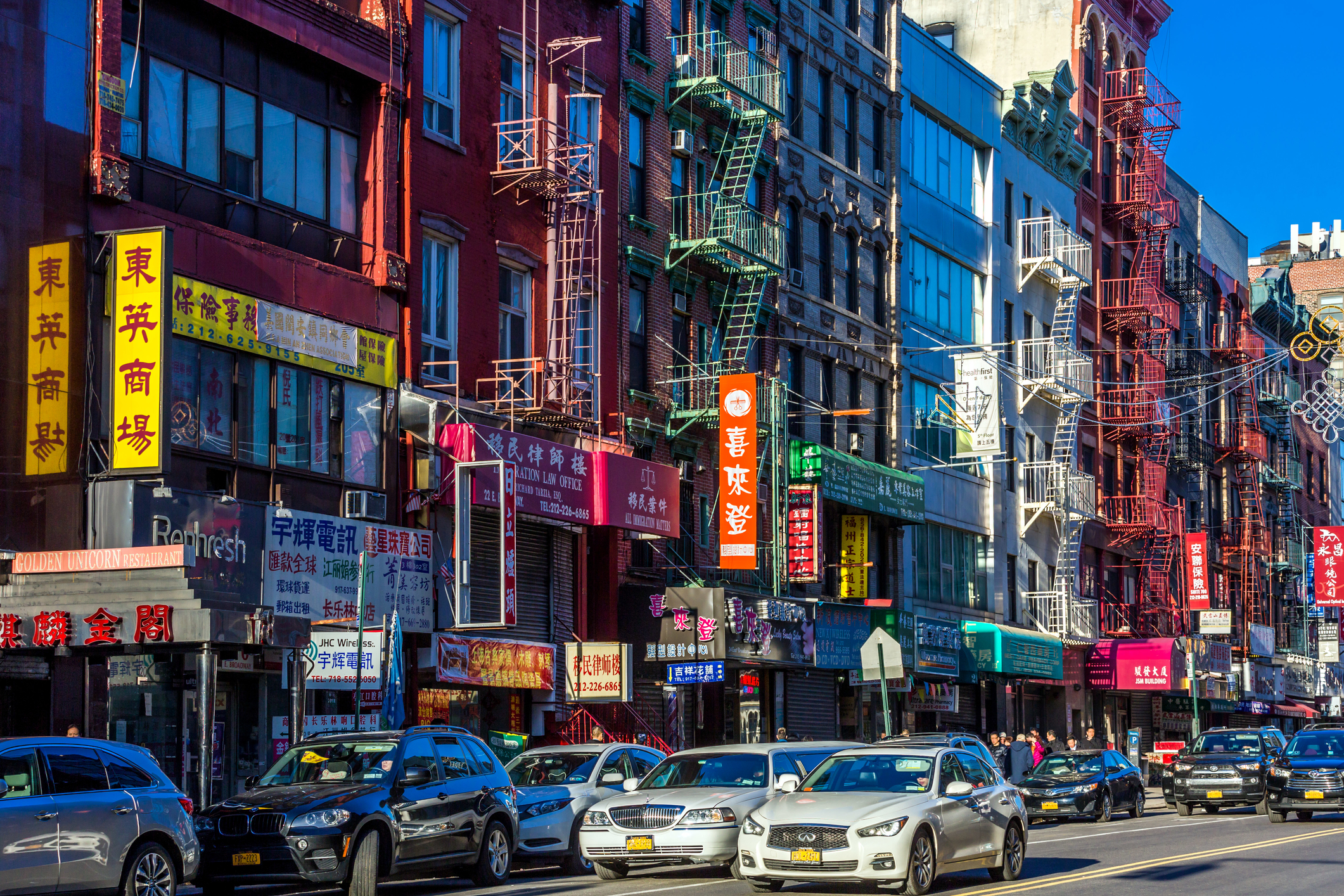
Chinatown’s only park, Columbus Park, was built in what was once the center of New York’s notorious Five Points neighborhood. During the 19th century, this was the most dangerous immigrant slum area in New York (as depicted in the book and movie Gangs of New York).
In the years that followed after the United States enacted the Immigration and Aliens Act of 1965, allowing many more Asian immigrants to enter the country, Chinatown’s population exploded. Geographically, most of the increase was in neighborhoods to the north. In the 1990s, Chinese people began to move into parts of the Lower East Side, which 50 years earlier had been inhabited by Eastern European Jews and 20 years earlier had been occupied by Hispanics.
Chinatown was adversely affected by the attacks of September 11, 2001. Being so close to Ground Zero, tourism and business took a long time to return to the area. Another reason was that the New York City Police Department closed Park Row – one of the two major thoroughfares connecting the financial center to Chinatown.

By 2007 luxury condominiums began to spread from Soho to Chinatown. Previously, Chinatown was characterized by overcrowding of houses with mainly Chinese residents. Although some projects target the Chinese community, luxury housing development has increased the economic and cultural diversity in Chinatown.
Today, rising Manhattan real estate prices and high rents have also affected Chinatown. Many young and poorer Chinese immigrants cannot afford the rents and this has slowed down growth as a result. A relocation process has also begun in Queens’ Flushing Chinatown and Brooklyn Chinatown. Many apartments, particularly in the Lower East Side and Little Italy, which had affordable rents for young Chinese immigrants, are being renovated and then sold or rented at much higher prices. Landlords, many of them Chinese-American, are terminating leases to low-income residents.
By 2009 many new Chinese immigrants settled along East Broadway, rather than the historic core west of the Bowery. Moreover, Mandarin began to eclipse Cantonese as the dominant Chinese dialect in New York’s Chinatown over the years. The New York Times reports that Flushing Chinatown rivals Manhattan’s Chinatown in terms of being a cultural center for the Chinese.
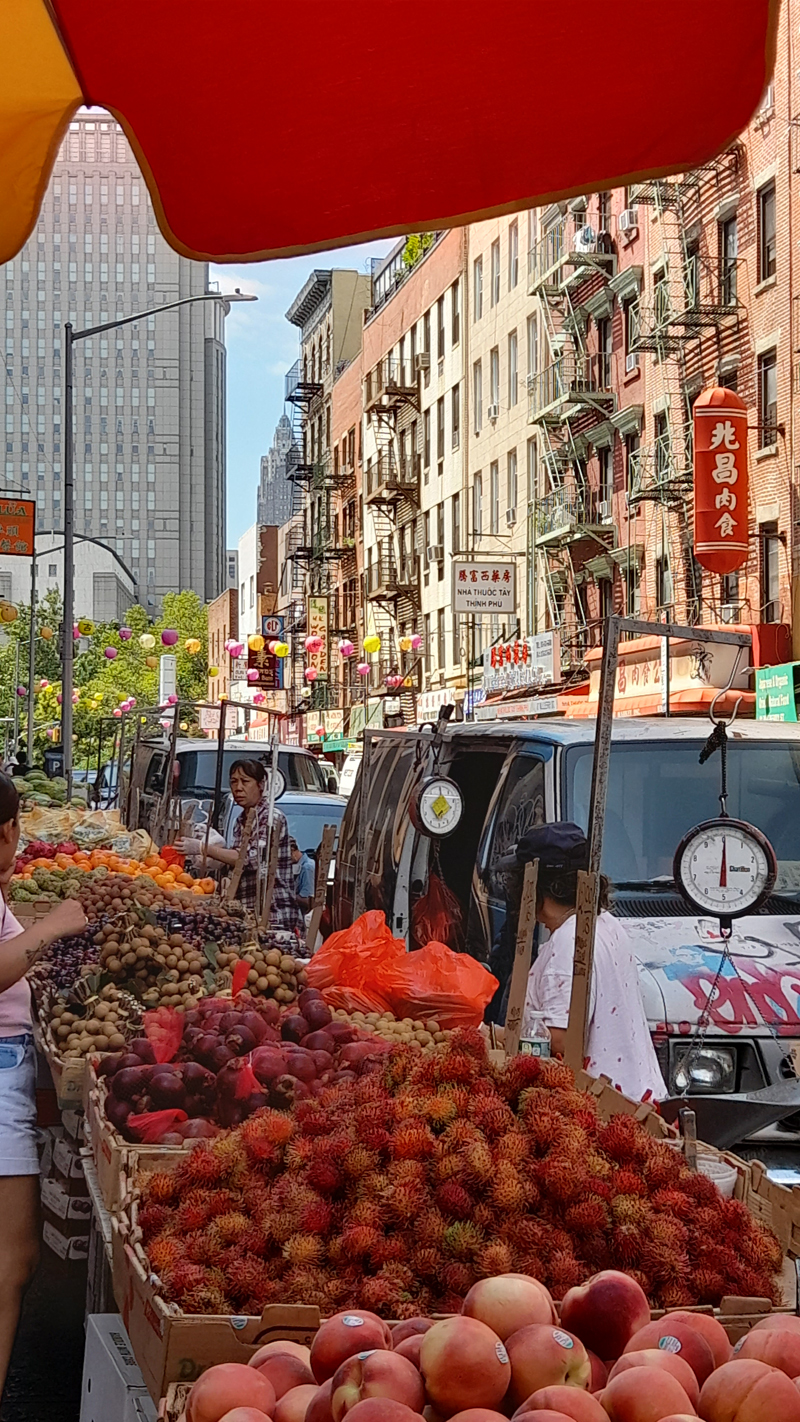
Economy in Chinatown
Chinese greengrocers and fishmongers cluster around Mott, Mulberry, Canal (from Baxter Street) and all along East Broadway (mainly from Catherine Street). Chinatown Jewelry is located on Canal Street between Mott and Bowery Streets. Due to the high savings rate among the Chinese, there are many Asian and American banks in the neighborhood.
Canal Street, west of Broadway (especially on the north side), is filled with street vendors selling imitation perfumes, watches, and handbags. This section of Canal Street used to be the warehouse area of stores selling surplus electronics.

In addition to the more than 200 Chinese restaurants in the area that provide employment, there are also some factories. The fashion industry has retained some apparel jobs in the region although most of the apparel industry has moved to China.
The local garment industry now focuses on rapid, small-quantity, piece-work production, which is generally done in the worker’s home. Much of the population growth is due to immigration.
As previous generations of immigrants acquired language and educational skills, they tend to move to areas with better housing and employment prospects available in New York’s suburbs and outer boroughs.
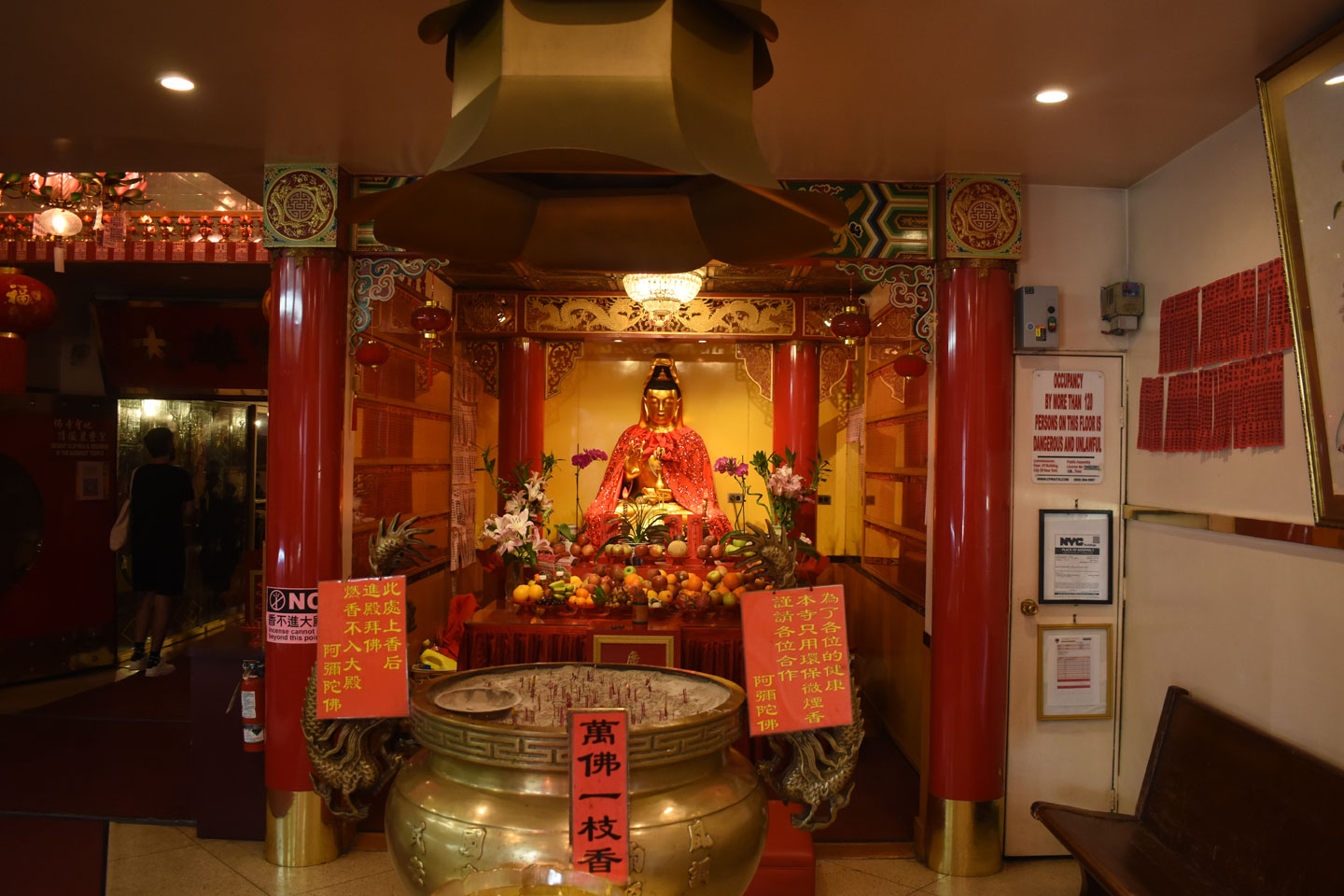
Demographics in Chinatown
Unlike most urban Chinatowns, Manhattan’s Chinatown is a residential area as well as a commercial area. Many population estimates put the population at 90,000 to 100,000. It is difficult to get an accurate count, as neighborhood participation in the US census is estimated to be low due to language barriers, as well as the large scale of illegal immigration.
By the 1960s, the majority of the Chinese population in Chinatown immigrated from Guangdong Province and Hong Kong, who spoke Cantonese, particularly the Canton and Taishan dialects. A Hakka minority was equally represented.
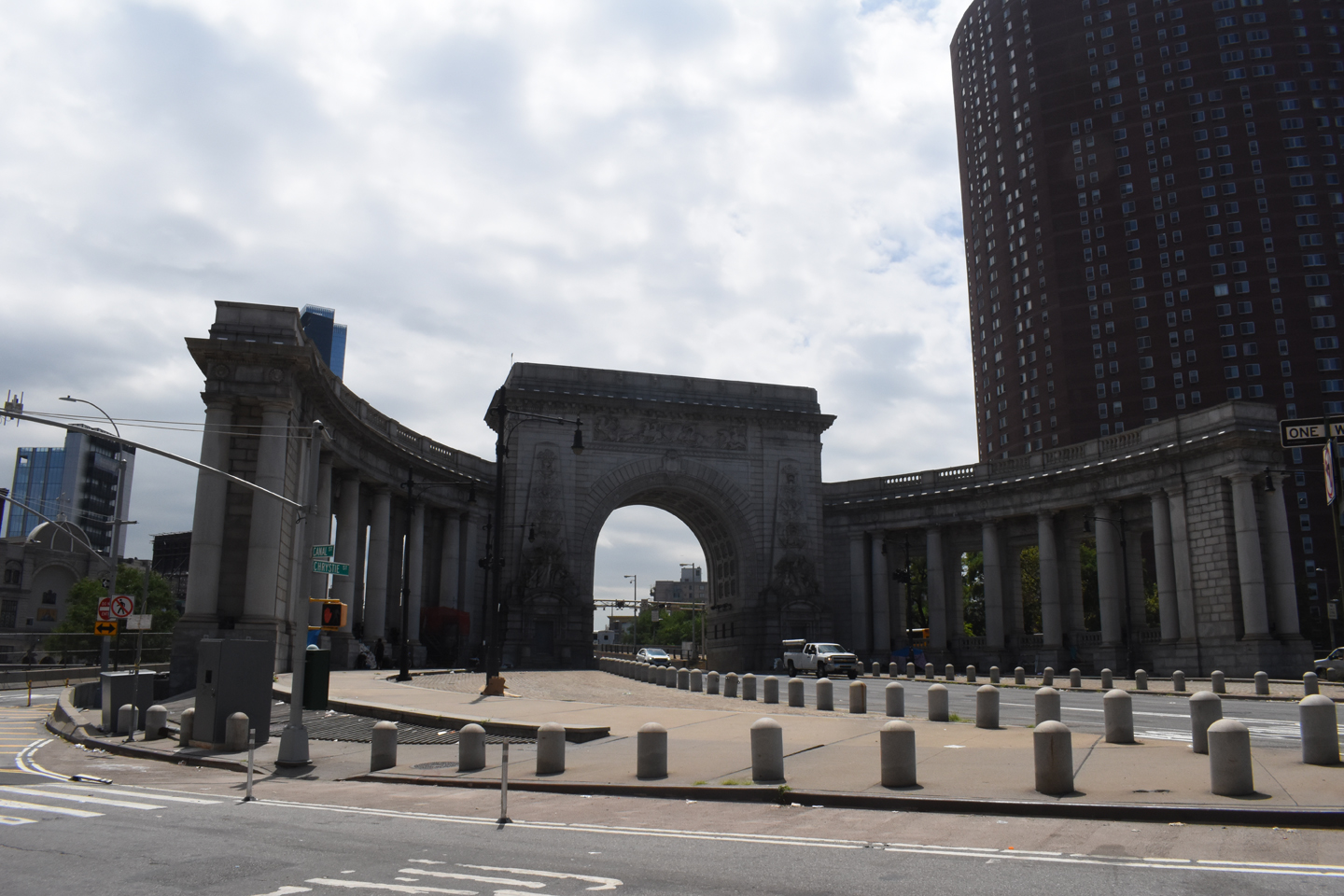
Residents rarely speak Mandarin, even into the 1980s. The immigration reform of 1965 opened the door to a huge influx of Cantonese from Hong Kong, and Cantonese became the dominant language.
But since the late 1980s and 1990s, the vast majority of new immigrants from China have come from mainland China, and mainly from Fujian province, who tend to speak the official Chinese language along with their regional dialects. . Most Fuzhou immigrants are illegal immigrants, while most of the Cantonese immigrants are legal immigrants in Manhattan’s Chinatown.

With the arrival of illegal Fuzhou immigrants during the 1990s, there is now a Fuzhou community in the eastern part of Manhattan’s Chinatown, which started on East Broadway during the 1990s and later expanded north over Eldridge Street to the late 1990s and early 2000s.
As the focus of the massive Fuzhou influx shifted to Brooklyn in the 2000s, the Cantonese population of Manhattan’s Chinatown still remains viable and large, and successfully continues to maintain the community’s Cantonese identity, maintaining the communal gathering spaces established decades ago in the western part of Chinatown, to shop, work, and socialize in contrast to the rapidly declining Cantonese population in Brooklyn’s Chinatown.
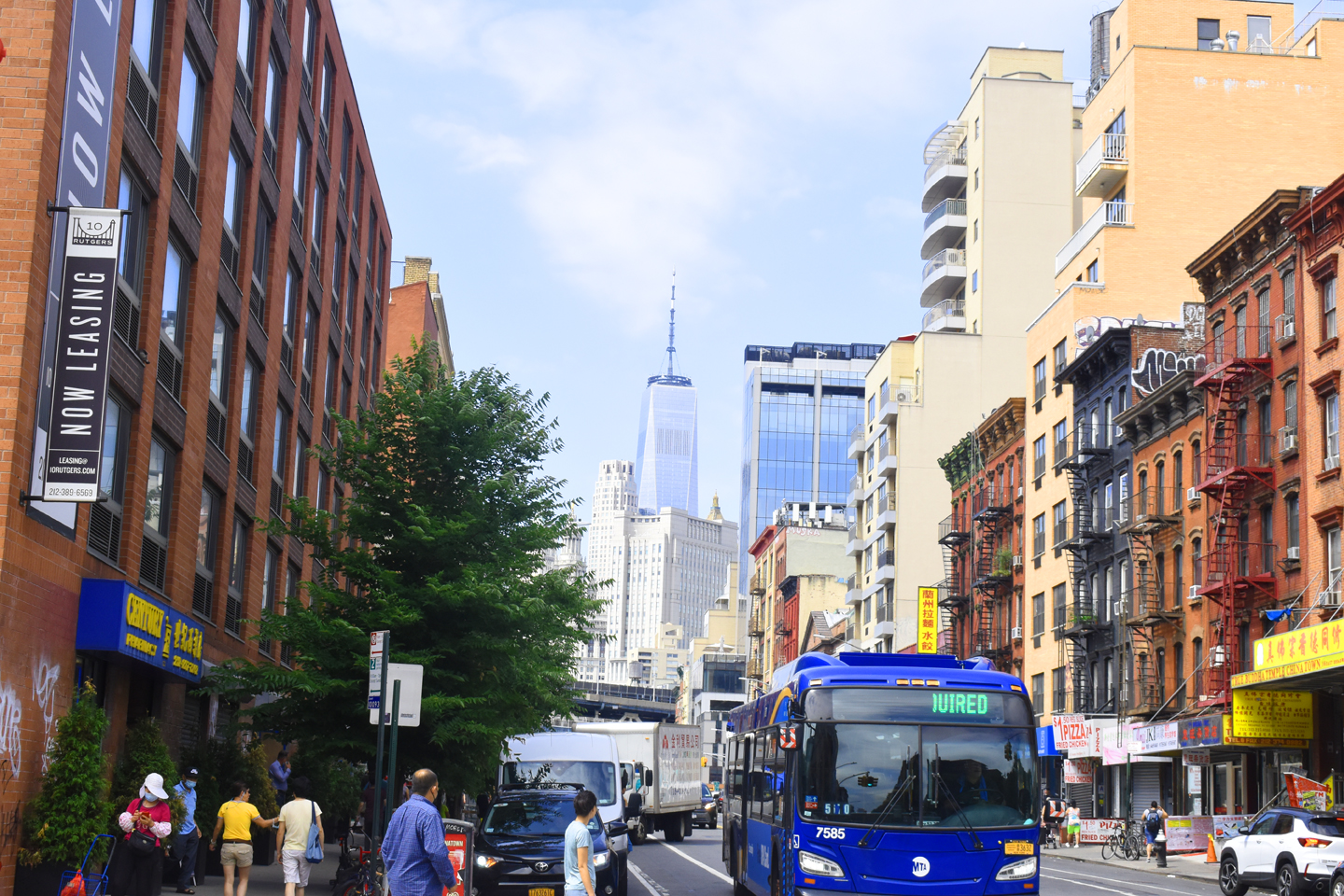
Linguistically, however, in recent years, the Cantonese dialect that had dominated Chinatown for decades has been rapidly eclipsed by Mandarin Chinese, the national language of China, and the lingua franca of most of the recent Chinese immigrants.
Housing in Chinatown
Chinatown’s housing stock still mostly consists of narrow working-class tenement buildings, some of which are over 100 years old. It is still common in such buildings to have bathrooms in corridors and shared between several apartments.
A federally subsidized housing project, called Confucius Plaza, was completed at the corner of Bowery and Division streets in 1976. This 44-story, 760-unit apartment building provided much-needed new housing stock to thousands of residents. The building also houses a new public elementary school, PS 124 (or Yung Wing Elementary).
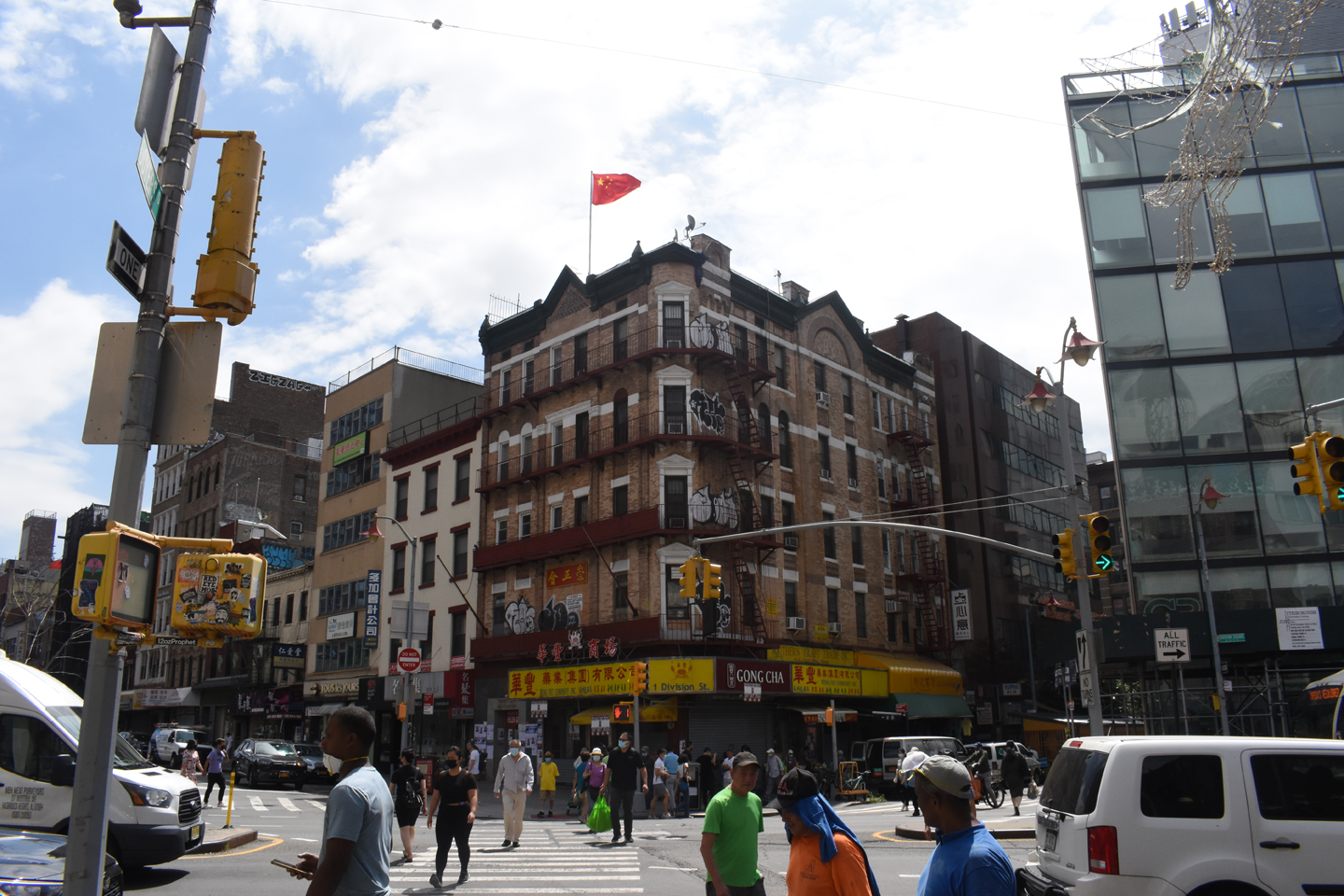
In addition to being the first and largest affordable housing complex to exist specifically for the Chinatown population, Confucius Plaza is also a cultural and institutional landmark, having propelled the community organization, Asian Americans for Equality (AAFE), one of the oldest political/community organizations of Chinatowns, founded in 1974.
Landmarks in Chinatown
For much of Chinatown’s history, there were few unique architectural features to show off to visitors arriving in the area (other than the sign language in the shops).
In 1962, the Lieutenant Benjamin Ralph Kimlau Memorial Arch was erected in Chatham Square to commemorate Chinese-Americans who lost their lives in World War II.

This monument, bearing the calligraphy of the great Yu Youren (1879-1964), was mostly ignored by residents and this was due to its poor location at a busy car intersection with little pedestrian traffic.
A statue of Lin Zexu, also known as Commissioner Lin, a Fuzhou Chinese official who opposed the opium trade, also stands in the square facing north from East Broadway.
In the 1970s, New York Telephone, the local telephone company at the time, began decorating the phone booths on the street in a pagoda style. In 1976, the statue of Confucius in front of Confucius Plaza became a common meeting place. In the 1980s, banks that opened new branches and others that were renovated began to use traditional Chinese style for their building facades.
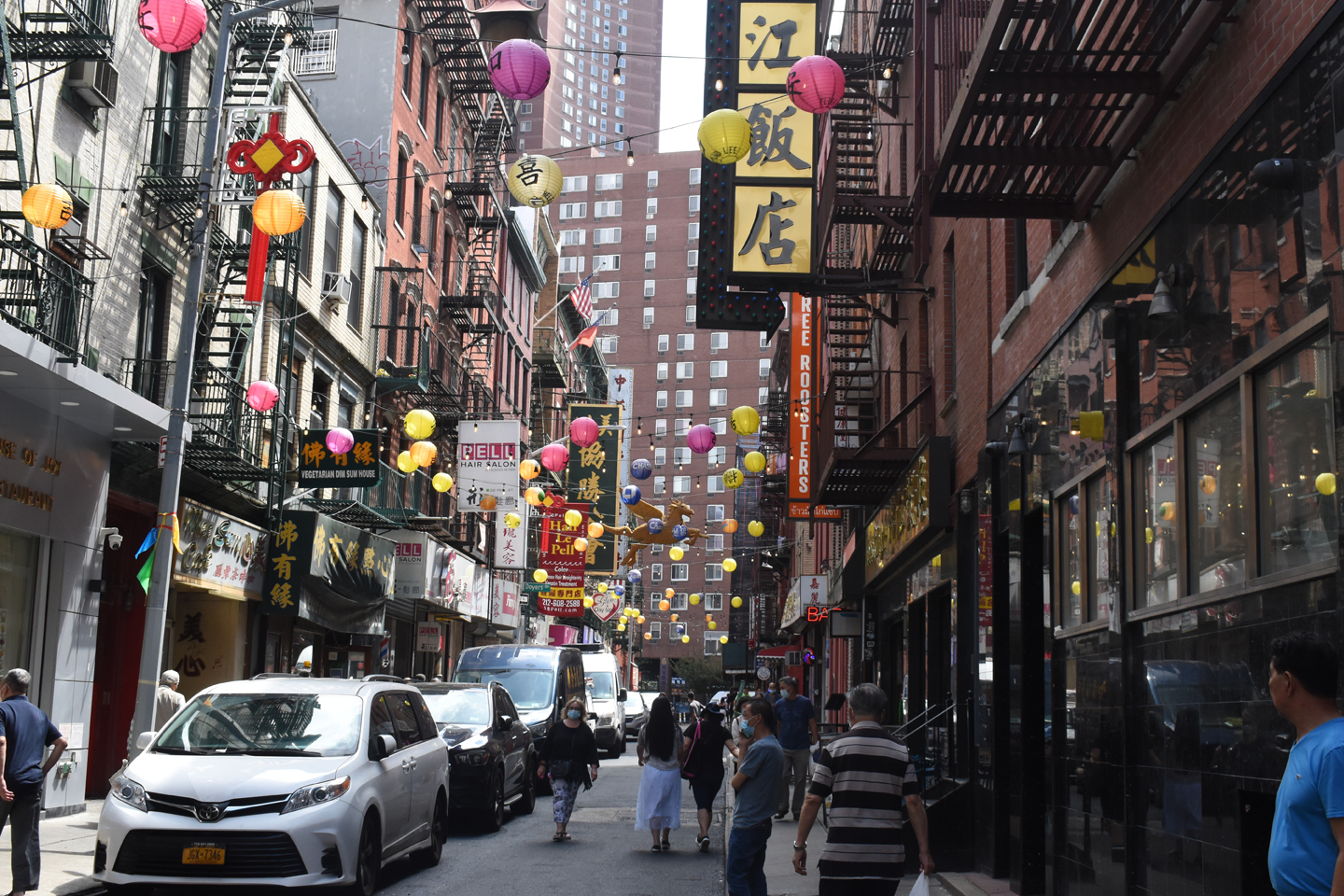
The Church of the Transfiguration, a national historic site was built in 1815, and is located on Mott Street.
In 2010, Chinatown and Little Italy were included in a single historic district on the National Register of Historic Places.


